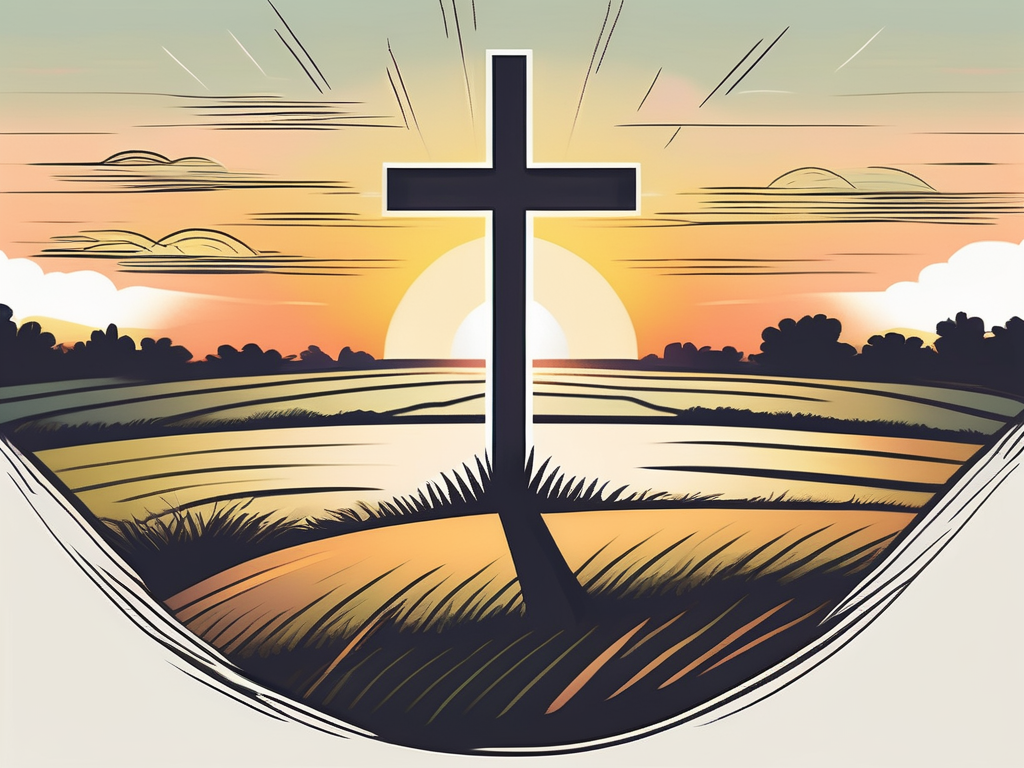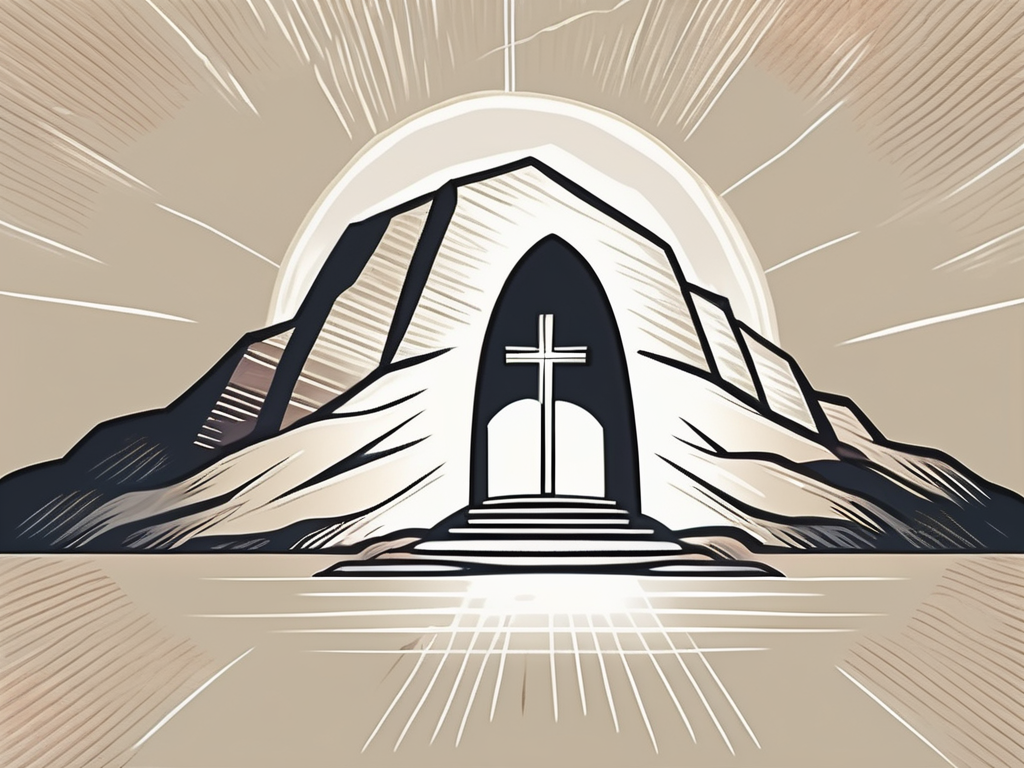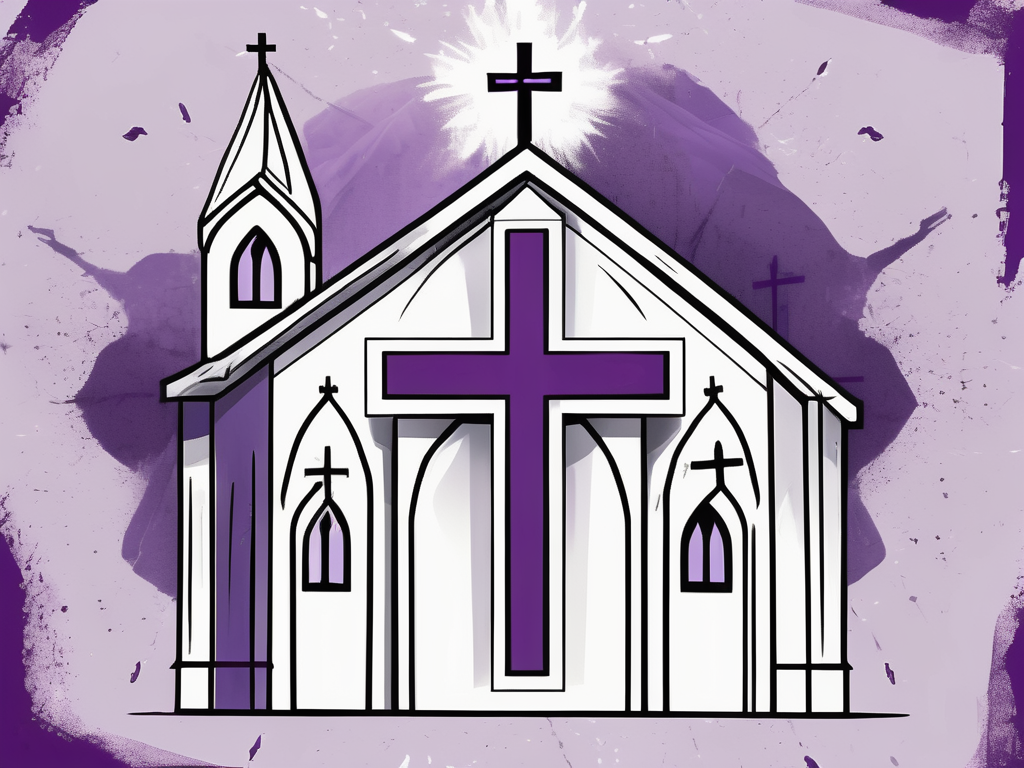Easter is one of the most important holidays in Christianity, commemorating the resurrection of Jesus Christ from the dead. It holds great significance for believers as it represents the victory of Jesus over sin and death. In this article, we will take a comprehensive look at the events surrounding Easter and explore their theological implications.
Understanding the Significance of Easter in Christianity
Easter is a time of tremendous celebration for Christians around the world. It is a reminder of God’s love and His redemptive plan for humanity. The resurrection of Jesus Christ is seen as the ultimate demonstration of God’s power and victory over death. It is the cornerstone of the Christian faith and reaffirms the hope of eternal life.
Easter serves as a stark contrast to the somber observance of Good Friday, which marks Jesus’ crucifixion. The resurrection on Easter Sunday brings joy and hope, transforming the despair of the crucifixion into a triumphant message of salvation.
But what does Easter truly mean to Christians? Let’s delve deeper into the biblical account and explore the theological perspectives that make Easter such a significant event in Christianity.
The Biblical Account of Easter
The biblical narrative of Easter is found in the New Testament, specifically in the four Gospels: Matthew, Mark, Luke, and John. According to these accounts, Jesus was crucified, died, and was buried. On the third day, which we now celebrate as Easter Sunday, He rose from the dead. The empty tomb serves as a powerful symbol of His resurrection.
However, the story doesn’t end there. The resurrection appearance of Jesus to His followers is mentioned in multiple instances. He appeared to Mary Magdalene, the disciples on the road to Emmaus, and to His disciples gathered in a locked room. These appearances substantiated His victory over death and provided assurance to His followers that He was indeed alive.
Imagine the awe and wonder that must have filled the hearts of those who witnessed these miraculous encounters. The resurrection of Jesus not only changed their lives but also transformed the course of human history.
Theological Perspectives on Easter
Easter holds different theological perspectives within Christianity. For some, it is primarily viewed as a historical event that validates the divinity of Jesus and the truthfulness of the biblical accounts. The resurrection is seen as a fulfillment of Old Testament prophecies, emphasizing Jesus’ role as the promised Messiah.
Others view Easter as a profound spiritual truth that has personal implications for believers. It represents the transformation and new life that believers experience through their union with Christ. The resurrection reinforces the hope of eternal life and encourages believers to live in the power of the risen Christ.
As Christians reflect on the significance of Easter, they are reminded of the incredible love that God has for humanity. It is a love that surpasses all understanding and offers forgiveness, redemption, and eternal life. Easter is a time to rejoice in the victory of Jesus over sin and death, and to embrace the hope and new life that He offers to all who believe.
So, as Christians gather to celebrate Easter, they do so with hearts filled with gratitude and joy. They remember the sacrifice of Jesus on the cross, the darkness of the tomb, and the glorious resurrection that brings hope to the world. Easter is not just a holiday; it is a profound and life-changing event that continues to shape the lives of believers today.
The Last Supper: Jesus’ Final Meal with His Disciples
Before His crucifixion, Jesus shared a significant meal with His disciples, known as the Last Supper. This event, recorded in the Gospels, holds deep symbolism and reveals important truths about Jesus’ mission.
The Last Supper took place in an upper room in Jerusalem, where Jesus and His disciples gathered to celebrate the Passover feast. As they reclined at the table, the atmosphere was filled with anticipation and a sense of impending change.
The Symbolism of the Last Supper
During the Last Supper, Jesus took bread and wine, offering them to His disciples. He instructed them to eat and drink, proclaiming that the bread represented His body and the wine His blood. This act of sharing in His body and blood serves as a reminder of the sacrificial nature of His death and the establishment of a new covenant.
The disciples, initially puzzled by Jesus’ words, soon understood the profound significance of His actions. The bread, broken and shared among them, symbolized Jesus’ body that would be broken for the sins of humanity. The wine, poured out and consumed, represented His blood that would be shed for the forgiveness of sins.
As they partook in this symbolic meal, Jesus spoke of the future, foreshadowing His impending betrayal and crucifixion. He urged His disciples to remember Him and His sacrifice whenever they shared in this communal meal, which would later become known as the Eucharist or Holy Communion.
The Last Supper also includes Jesus’ act of washing His disciples’ feet. This humble act of service exemplifies Jesus’ teachings on servanthood and love for one another. In a culture where foot-washing was typically performed by a servant, Jesus, the Son of God, took on the role of a servant and washed the feet of His disciples.
Through this act, Jesus demonstrated the importance of humility and selflessness in the life of a follower of Christ. He challenged His disciples, and all who would come after them, to serve one another with love and compassion, just as He had served them.
The Role of Judas in the Easter Story
One of the disciples present at the Last Supper was Judas Iscariot, who would later betray Jesus. His betrayal marks a tragic moment in the Easter story, as he agreed to hand Jesus over to the religious authorities in exchange for thirty pieces of silver.
Judas’ role serves as a reminder of the human frailty and the consequence of betraying trust. It is a sobering reminder that even those who have walked closely with Jesus can succumb to temptation and make choices that have devastating consequences.
However, it also highlights the sovereignty of God, as His ultimate plan for redemption was fulfilled even through Judas’ betrayal. Despite Judas’ actions, Jesus’ crucifixion and resurrection brought about salvation for all who believe in Him.
The Last Supper, with its rich symbolism and profound teachings, remains a pivotal event in the life and ministry of Jesus. It serves as a reminder of His sacrificial love, His call to servanthood, and the importance of faith and trust in God’s ultimate plan of redemption.
The Crucifixion: Jesus’ Sacrifice on Good Friday
Good Friday, the day Jesus was crucified, is a solemn and reflective time for Christians. It is a day to contemplate the immense suffering and sacrificial love demonstrated by Jesus on the cross.
As we delve deeper into the significance of the crucifixion, it is important to understand the process of Roman crucifixion. This brutal and agonizing form of execution was practiced by the Romans, and Jesus, in His infinite love for humanity, willingly endured this unimaginable pain.
The Process of Roman Crucifixion
Crucifixion was not just a physical torment, but a method of public humiliation and degradation. The condemned person would be stripped naked, further adding to their humiliation. Jesus, the Son of God, willingly bore this shame for the sake of humanity.
As Jesus was nailed to the cross, the excruciating pain would have been unbearable. The nails piercing through His hands and feet, the weight of His body pulling down on the wounds, every breath becoming a struggle. Yet, through it all, Jesus remained steadfast in His love and commitment to save mankind.
While the crucifixion was a cruel act, it holds deep theological significance. Jesus willingly suffered on the cross, taking on the sins of humanity, and offering Himself as a perfect sacrifice for the forgiveness of sins. This act of selflessness and love is a testament to the depth of God’s love for His creation.
The Seven Last Words of Jesus
During His crucifixion, Jesus uttered several statements known as the “Seven Last Words.” These statements, recorded in the Gospels, provide insights into Jesus’ heart and His purpose in His moment of suffering.
Each of the Seven Last Words carries profound meaning and reveals different aspects of Jesus’ love, compassion, and the fulfillment of His mission on earth. In the midst of unimaginable pain, Jesus’ first words were, “Father, forgive them, for they know not what they do.” This act of forgiveness exemplifies Jesus’ boundless mercy and His desire for the salvation of all.
As the hours passed, Jesus continued to speak from the cross. He expressed His thirst, reminding us of His humanity, and cried out, “My God, my God, why have you forsaken me?” These words echo the depth of Jesus’ suffering and His identification with the pain and abandonment that humanity often experiences.
Finally, as Jesus neared the end of His earthly journey, He proclaimed, “It is finished.” These three words signify the completion of God’s redemptive plan. Jesus’ sacrifice on the cross accomplished what no human effort could achieve – the forgiveness of sins and the restoration of humanity’s relationship with God.
As we reflect on the crucifixion of Jesus on Good Friday, let us remember the immense love and sacrifice that took place on that day. It is through His suffering that we find hope, redemption, and the promise of eternal life.
The Resurrection: Jesus’ Victory over Death
The resurrection of Jesus Christ on Easter Sunday stands as the central event of the Christian faith. It is a declaration of victory over death, offering hope and assurance of eternal life to all who believe.
The Empty Tomb and the Angel’s Message
After Jesus’ crucifixion, His body was laid in a tomb. However, when His followers returned to the tomb on the third day, they found it empty. An angel delivered the astounding news that Jesus had risen from the dead, just as He had said.
The empty tomb and the angel’s message provide tangible evidence of the resurrection and the truthfulness of Jesus’ claims. It is a testament to the power of God and His ability to overcome death itself.
Jesus’ Appearances after His Resurrection
Following His resurrection, Jesus appeared to His disciples and other individuals on various occasions. These encounters served to validate His resurrection and strengthen the faith of His followers.
Jesus’ appearances included interactions with Mary Magdalene, who initially mistook Him for the gardener, and His disciples, proving that He was indeed alive. These encounters brought comfort, joy, and renewed hope to His followers.
The Ascension: Jesus’ Return to Heaven
Forty days after His resurrection, Jesus ascended into heaven, marking His return to His Father’s presence. The ascension holds great significance within Christian belief and serves as a promise for the future.
The Significance of the Ascension in Christian Belief
The ascension symbolizes Jesus’ exaltation and His rightful place at the right hand of God. It affirms His authority and sovereignty over all creation. It also serves as a reminder that Jesus is now seated in glory, interceding on behalf of believers.
Furthermore, the ascension carries the promise of Jesus’ second coming. Just as Jesus ascended into heaven, so will He return to establish His eternal kingdom and fulfill the ultimate hope of redemption.
The Promise of Jesus’ Second Coming
Christianity holds the belief in the second coming of Jesus Christ. It is a future event that is eagerly anticipated by believers, as it signifies the final consummation of God’s plan for the world.
The promise of Jesus’ second coming reminds believers to live in anticipation of His return. It encourages them to faithfully live out their lives, knowing that one day Jesus will return to judge the living and the dead and bring about the full restoration of all things.
In conclusion, Easter is a time of profound significance for Christians. It encompasses the events of the Last Supper, the crucifixion, the resurrection, and the ascension of Jesus Christ. Each part of the Easter story holds deep theological meaning and offers believers hope, redemption, and the assurance of eternal life. As we celebrate Easter, may we reflect on these events and the transformative power they have in our lives as followers of Jesus Christ.












